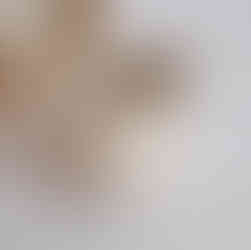Tactile Minds - London Design Festival
- Joseph Ludkin
- Sep 22, 2018
- 2 min read
18 - 22nd September 2018
On the 18th September i took part in the London Design Festival exhibiting in the show Tactile Minds. 22 ceramic artists and makers made pieces in response to their individual mental health journeys, emulating the full and unique spectrum of experience. These works were on display in the 18th century House Mill in Bromey-by-Bow, the world’s largest surviving tidal mill in support of the mental health charity, Mind.
1 in 4 people each year face mental health problems. It is founders and curators Candy Ward and Catherine Mountford’s passion for working together to build awareness of the mental health challenges and their love for working with such a versatile and expressive material, that formed Tactile Minds.
This exhibition was set up to publicly continue the open conversation of mental health challenges and to empower more people to talk about their experiences with others and to have the confidence to seek professional help and therapy.
The House Mill was a remarkable setting for this exhibition to take place in as it steps away from the clean white box that art exhibitions are so often held in. Its historical context within the ever changing cityscape of east London offers a distinctive chance to draw attention to this beautiful building and the heritage of Tower Hamlets and Newham.

Samples of work at the show;
As part of this show i designed an installation titled: 'one in four'.
I presented four wooden cases containing four Yunomi in each. In each case one of the Yunomi had been broken and then repaired using the Japanese technique (and philosophy) of Kintsugi.
Yunomi in wooden cases.
‘One in Four’
Kintsugi’s celebration of the broken lends itself as the perfect vehicle to explore and revaluate our attitudes towards mental illness. One in four people experience mental health issues within their life time. Those that have experienced mental trauma and even those around them often go to great lengths to hide, disguise or ignore the symptoms and effects of their experience. Although we are starting to see a slow but positive shift, discussing mental health remains a social taboo, admitting to suffering from mental health issues still carries the stigma of weakness and remains the elephant in the room.
Kintsugi philosophy embraces the flawed or imperfect and celebrates the broken. The gold lines synonymous with the Kintsugi technique are indicators that the object has been broken and then repaired. Repairs are not hidden but are illuminated, celebrating the trauma, the recovery, the cracks and scars. The philosophy believes that things that have been broken and then fixed become stronger, more resilient and gain enhanced beauty. In Japanese culture Kintsugi objects are treasured, flaunted and revered rather than discarded, ignored or covered up. If we start to view mental illness from the view point of Kintsugi philosophy we can start to discuss and celebrate the experiences as unique strengths and beauty.
Panel Discussion
As part of the exhibition @josephludkin, @steph_buttle and @zoeclareartist took part in a panel discussion with Zoë Hough from @anxietyempire , Emmanuel Owusu, author of “My Psychosis Story”, and chaired by @saraheachristie. The panel discussed aspects of arts and mental health and the @tactilemindsexhibition.








































Comments